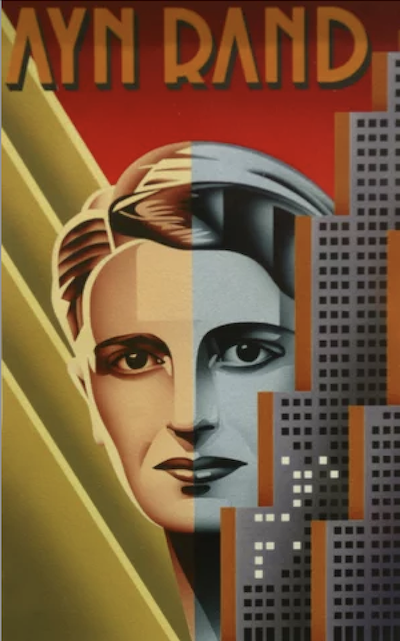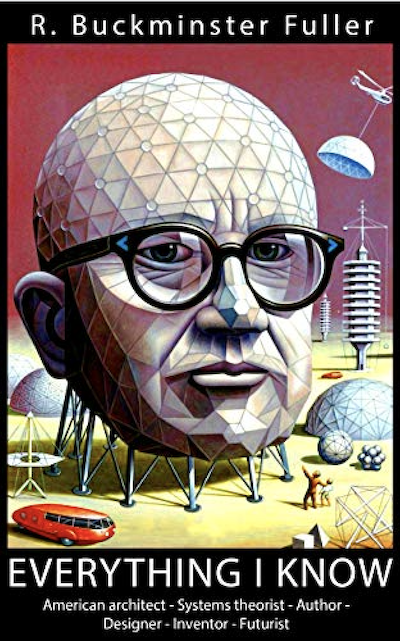3. If Robin Hood Was an Engineer

Ayn Rand
Ayn Rand, the objectivist philosopher and proto-Libertarian, had an interesting take on the mythical character of Robin Hood. In her novel Atlas Shrugged, one of the characters, a Swede named Ragnor Danneskjold, was an infamous modern-day pirate, staging raids against seemingly unrelated targets, on land and on the high seas. He has the following to say to another primary character, industrialist Hank Rearden:
“But I’ve chosen a special mission of my own. I’m after a man whom I want to destroy. He died many centuries ago, but until the last trace of him is wiped out of men’s minds, we will not have a decent world to live in.”
“What man?”“Robin Hood.”. . . It is said that he fought against the looting rulers and returned the loot to those who had been robbed, but that is not the meaning of the legend which has survived. He is remembered, not as a champion of property, but as a champion of need, not as a defender of the robbed, but as a provider of the poor. He is held to be the first man who assumed a halo of virtue by practicing charity with wealth which he did not own, by giving away goods which he had not produced, by making others pay for the luxury of his pity. He is the man who became the symbol of the idea that need, not achievement, is the source of rights, that we don’t have to produce, only to want, that the earned does not belong to us, but the unearned does. He became a justification for every mediocrity who, unable to make his own living, has demanded the power to dispose of the property of his betters, by proclaiming his willingness to devote his life to his inferiors at the price of robbing his superiors. It is this foulest of creatures – the double-parasite who lives on the sores of the poor and the blood of the rich – whom men have come to regard as a moral ideal. And this has brought us to a world where the more a man produces, the closer he comes to the loss of all his rights, until, if his ability is great enough, he becomes a rightless creature delivered as prey to any claimant – while in order to be placed above rights, above principles, above morality, placed where anything is permitted to him, even plunder and murder, all a man has to do is to be in need. Do you wonder why the world is collapsing around us? That is what I am fighting, Mr. Rearden. Until men learn that of all human symbols, Robin Hood is the most immoral and the most contemptible, there will be no justice on earth and no way for mankind to survive.”[1]
Another Navy man was R. Buckminster Fuller. Although never a pirate himself (as far as is known!) he does discuss them at length in his book Operating Manual for Spaceship Earth. He calls the sophisticated technologically-advanced seafarers of the Great Age of Exploration from the late fifteenth century on, the “Great Pirates”. They were the first humans in history to see the world for what it actually is, a sphere. The vast majority of the planet’s inhabitants never strayed farther than 25 miles from where they were born. The Great Pirates, however were globe circumnavigating, map making, omniscient gods in comparison.[2]
Fuller, an avowed technocrat and modern-day Renaissance man (poet, writer, philosopher, mathematician, architect, engineer, inventor), defined wealth as follows:
The number of forward days for a specific number of people we are physically prepared to sustain at a physically stated time and space liberating level of metabolic and metaphysical regeneration.[3]
For the first time a scientific big-picture analysis was made of wealth and it showed clearly that there are no physical requirements for poverty, only political.
The now-potentially-to-be-omni-successful social revolution could never before in history have been realized. Until 1970 there had always been enough physical resources but not enough metaphysical resources (of experience-won know-how) on our planet to render the physical technology capable of taking care of everyone at a sustainable, eminently successful level of physical well-being— bloodlessly accomplished and sustainable without the coexistence of either a human slave or working class. Until 1970 it had realistically to be either you or me, not enough for both. Since 1970 it has become realistically you and me—all else is automated acceleration to human-race extinction on planet Earth.
Greater justice and economic improvement for the many is not always the result of social revolution. The Europeans’ guns overwhelming of the American Indian bow-and-arrow weapons was in most ways a retrogressive social revolution implemented by design-science revolution. It is always the design revolution that tips the social scales one way or the other. However, sum totally the combined design and social revolutions ultimately favor the many. Between 1900 and today, 60 percent of humans in the U.S.A. have attained a standard of living far in advance of those of the greatest potentates of 1900 while concurrently doubling the life-span of that fortunate 60 percent.

R. Buckminster Fuller
Never before in all history have the inequities and the momentums of unthinking money-power been more glaringly evident to so vastly large a number of now literate, competent, and constructively thinking all-around-the world humans. There’s a soon-to-occur critical-mass moment when the intuition of the responsibly inspired majority of humanity, in contradistinction to the angered Luddites and avenging Robin Hoods, faced with comprehensive functional discontinuity of nationally contained techno-economic system, will call for and accomplish a world-around reorientation of our planetary affairs.[4]
Fuller stated that instead of confiscating the wealth of the rich to bring their standard of living down to the masses, we should raise the standard of living of the masses to equal that of the rich, and can do so with technological progress, not a social revolution:
We’re talking about a new kind of socialism, a socialism of four-and-a-half-billion billionaires. It’s not a socialism of pulling the top down and sharing the misery, its a matter of pulling the bottom up and doing so, only because we now can do so much more with each pound of material, each erg of energy, each second of time. The increase has been about 99-fold. That’s the only thing that makes it possible.[5]
Unfortunately, Fuller’s message has for the most part been forgotten. The following are exerpts by J. Baldwin from his book entitled Bucky Works: Buckminster Fuller’s Ideas for Today:
Does anyone here know who Buckminster Fuller was? When I put that question to a roomful of today’s college students, one or two hands may wave uneasily. “Wasn’t he the dome guy? I’ve heard my dad mention him.”
He was the dome guy, of course; his domes cover more space than the work of any other architect. They, and his other ideas, discoveries, and inventions, offer solutions to many of our most vexing worldwide problems.
Fuller (everyone called him Bucky) intentionally worked fifty years ahead so that critical concepts and technology would be ready when they were needed. That’s now.
It isn’t surprising that younger people haven’t heard of him. Born in 1895, he was a child another era – time before automobiles, aircraft, radio, television, computers, and moon-walking. Bucky grew up, wide awake, right along with those inventions. Most of his contemporaries interpreted the rapidly accelerating new technologies in terms of profits and military superiority – as means of ensuring their survival as an elite “fittest.” But Bucky saw technology could be used to abolish poverty, hunger, and by using the world’s resources for the good of all.
He insisted that politics had not accomplished and could not accomplish that. Only energy efficient, resource-efficient design could “make the world work for everyone” for the first time in history. In 1927 Bucky started what he called a “design science revolution” to bring this about. He set out to show by example what one person could do as a design scientist.
Totally committed, and working at a furious pace that few younger men and women could match, Bucky accomplished much in the following fifty-six years. He worked hard right up to his dying day in 1983.
But the design science revolution is far from over, there is new urgency: It is becoming clear that we are about to find out whether humans will be a success on Earth, or fail as a species. Bucky was optimistic that we could make it, but not that we would. Everything Bucky did was intended to help us succeed.
Thirteen years after his death, most of the books by and about him are out of print. His dome patents have expired; few newer domes (at Disney’s EPCOT, for example) mention him in their credits. With the exception of a few centenary celebrations and the buckminsterfullerene carbon molecule, you don’t see his name much these days. (He didn’t discover “Buckyballs,” but his geodesic geometry inspired the men who did.)
I wrote the book excerpted here to reintroduce some (but not all) of the major ideas, inventions, and discoveries that Fuller developed for our use. Instead of their gee-whiz aspects, I’ve focused on the logic behind his work, and how he nurtured his ideas from paper napkins cribbles to proof-of-concept demonstrations. He was showing us how, to think in new ways – to use our full potential. My intention is to let his example inspired you to work on the important problems that still must be solved. Buck certainly left us plenty to work with.[6]
Fuller’s uniquely complex, yet clear-headed and optimistic analysis of the challenges we face as a species on Spaceship Earth deserve to be reawakened and joined into a new mosaic of solutions.
[1] Ayn Rand, Atlas Shrugged (Signet, 1957), p. 539-541.
[2] R. Buckminster Fuller, Operating Manual for Spaceship Earth (Southern Illinois University Press, 1969), p. 78.
[3] R. Buckminster Fuller, Operating Manual for Spaceship Earth (Southern Illinois University Press, 1969), p. 27.
[4] R. Buckminster Fuller, Grunch of Giants (New York: St. Martin’s Press, 1983), pp. 88-89.
[5] R. Buckminster Fuller, Earthian’s Critical Moment , Transcript taken from a dialogue while playing World Game. From Buckminster Fuller Institute website (http://www.bfi.org/earthian.htm).
[6] J. Baldwin, The garden of Eden (excerpt from ‘Bucky Works: Buckminster Fuller’s Ideas for Today’), Whole Earth Review, Spring 1996 n89 p. 6(10).
